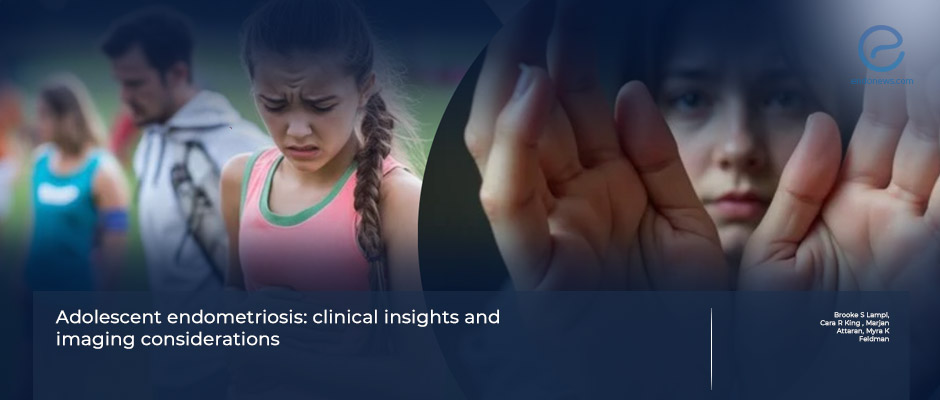Endometriosis in Youth: Diagnostic and Treatment Insights
Jun 27, 2025
Adolescent endometriosis is distinct from adult disease and calls for different diagnostic strategies.
Key Points
Highlights:
- Endometriosis is frequently underdiagnosed in adolescents due to delayed symptom recognition.
- MRI is preferred over transvaginal ultrasound for imaging in this age group.
- Adolescent lesions often appear subtle on laparoscopy and may be overlooked.
- Early, individualized care is essential to prevent progression and protect fertility.
Importance:
- Adolescents may delay reporting symptoms, increasing the risk of advanced disease.
- Menstrual pain can impact school, mental health, and quality of life.
- Age-appropriate evaluation and treatment are critical for effective management.
What's done here:
- This review article, authored by a multidisciplinary U.S. team, outlines current best practices in the evaluation and treatment of suspected endometriosis in adolescents.
- It focuses on symptomatology, imaging, and individualized care approaches.
Basic outlines:
- Endometriosis is a leading cause of secondary dysmenorrhea in adolescents, especially when symptoms are unresponsive to NSAIDs or hormonal therapy.
- Acyclic pelvic pain is common; cyclic pain may also be present. These symptoms often contribute to school absences, anxiety, and depression.
- MRI is the imaging modality of choice, particularly when transvaginal ultrasound is not feasible or informative.
- Laparoscopic findings may differ from adult cases; lesions may appear clear, white, or punctate rather than classic black or blue.
- Obstructive Müllerian anomalies should be ruled out in adolescents with pelvic masses.
- First-line treatment includes ovulation suppression with combined oral contraceptives.
- Diagnostic laparoscopy may be indicated if pain persists after 3–6 months of medical therapy.
- Surgical management should prioritize lesion excision while protecting fertility.
From the Editor-in-Chief – EndoNews
"This paper highlights a critical gap in endometriosis care: the adolescent population. Diagnostic delays are common due to normalized pain, underreporting, and clinical oversight. The authors provide valuable insights on age-appropriate imaging—especially the role of MRI—and underline how atypical lesion appearances can lead to missed diagnoses during laparoscopy.
Their message is clear: adolescent endometriosis is real, often severe, and requires tailored, timely care. Fertility preservation, experienced surgical planning, and multidisciplinary support should be central to management. This article is a timely call to treat adolescent patients not as outliers, but as a priority in endometriosis care."
Lay Summary
Adolescent endometriosis presents unique diagnostic and management challenges due to both patient-related and clinical factors. Young patients often delay seeking care due to inexperience, discomfort discussing symptoms, or normalization of pain. At the same time, clinicians may overlook endometriosis as a potential cause of dysmenorrhea or chronic pelvic pain in this age group.
In a recent article published in Abdominal Radiology, Dr. Lampl and colleagues from the Cleveland Clinic highlight the distinct clinical and imaging features of endometriosis in adolescents. The authors emphasize that lesions in this group may be subtle, atypical in appearance, and easily missed on laparoscopy. Deep infiltrating lesions involving the uterosacral ligaments, posterior vagina, or ovaries are not uncommon. MRI is preferred over transvaginal ultrasound for diagnosis, especially in sexually inactive adolescents.
The paper also discusses the link between Müllerian anomalies and adolescent endometriosis, illustrated through three detailed case reports. First-line treatment involves ovulation suppression using combined oral contraceptives or progestins. If pain persists after 3–6 months of medical therapy, diagnostic laparoscopy may be considered. Surgical intervention should prioritize fertility preservation and requires experienced hands—especially in cases involving bilateral ovarian disease.
The authors advocate for a multidisciplinary approach, integrating medical, psychological, and social support to improve outcomes and quality of life for affected adolescents.
Research Source: https://pubmed.ncbi.nlm.nih.gov/40116888
adolescent endometriosis pelvic MRI deep endometriosis ultrasonography hormonal suppression Mullerian anomaly chronic pelvic pain endometriosis.

